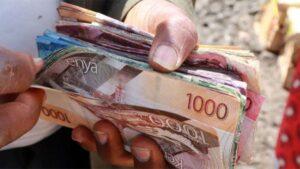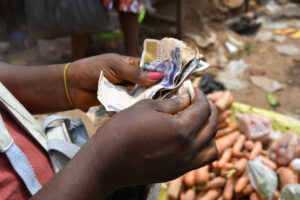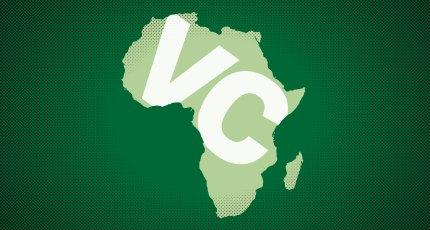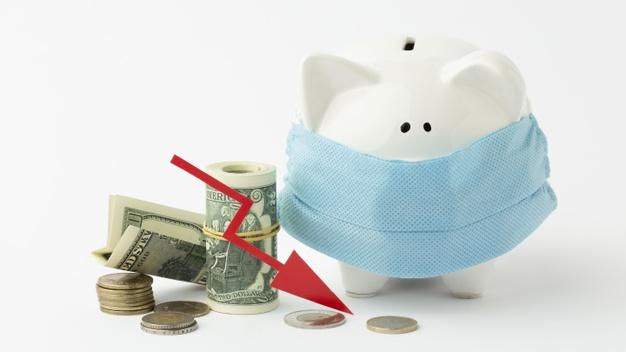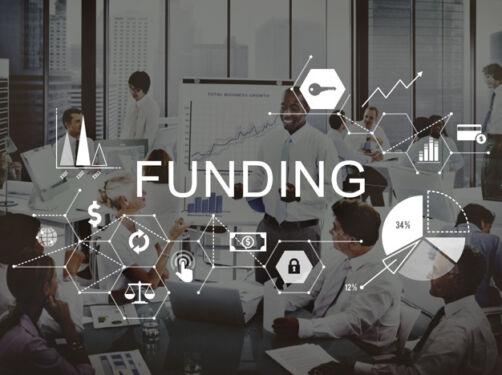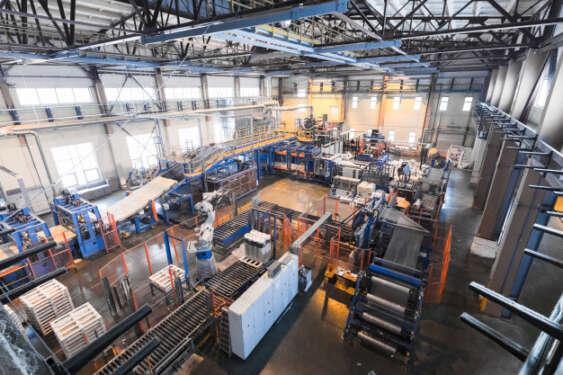- Brace for High Interest Rates for a Longer Period World Bank Warns Kenya
- Kenya-Ethiopia Trade Relations: Legislators Advocate for Policy Alignment to Boost Ties
- Visualising the state of debt in Africa 2024
- Abu Dhabi radiates optimism as over 300 startups join AIM Congress 2024
- TLcom Capital Raises $154 million in Funding to Boost Its African Growth
- Africa’s $824Bn debt, resource-backed opaque loans slowing growth — AfDB
- LB Investment brings $1.2 trillion portfolio display to AIM Congress spotlight
- AmCham Summit kicks off, setting course for robust future of US-East Africa trade ties
Author: Caroline Muriuki
Africa has boasted promising prospects for investors looking to invest in the continent’s untapped sectors and industries, attractive growth opportunities and an improving business environment.
Venture Capital in Africa has seen significant growth in recent years and as the entrepreneurial space on the continent matures it remains optimistic. In addition, once the African Continental Free Trade Area is fully implemented it will significantly shape the path of Venture Capital and Private Equity.
According to a report by the African Private Equity and Venture Capital Association (AVCA), the trends that will drive Private Equity and Venture Capital in Africa are in sectors such as Health Care, renewable energy, Agriculture and ICT and Digitalisation.
Health Care Sector
In the years leading to 2020, the health care sector in Africa was already experiencing significant growth and attracting private equity investments.
In 2020 H1, the health care sector accounted for the largest share …
Africa is one of the world’s fastest-growing economies with the continent expected to be home to nearly 1.7 billion people by 2030 and have a combined business and consumer spending of $6.7 trillion according to the Brookings Institute.
This potential in the economy has made Africa attractive for investors seeking high growth businesses with long-term impact. Because of this, Venture Capital (VC) and Private Equity (PE) have emerged as important drivers for directing capital into these businesses hence stimulating capacity building and economic growth across Africa.
According to a report from the African Private Equity and Venture Capital Association (AVCA), African companies which are backed by PE and VC firms are among the most innovative and pioneering firms in the world and attract more international and local investments.
According to the report, despite the effect of the pandemic on businesses, many businesses backed by the PE and VC firms especially …
Banks in East Africa are empathizing with the loss of livelihood and businesses of their clients by easing off on loan payment demands as the covid-19 pandemic continues to disrupt economies.
In 2020, top East African banks increased provisions for bad debts by over $736 million so as to reduce exposure on businesses and household loans in countries that are most affected by the pandemic.
According to a review of the banks audited financial statements, in 2019 the top eight Kenyan banks by market share tripled their loan loss provisions to $960 million from $263.11 million.
In order to take care of $1.56 billion worth of loans that had been restructured to bail out clients who were most affected by the pandemic, equity bank increased its loan loss provision by $198.6 million making it the greatest hit on its net earnings that the bank has ever experienced. This led the …
Egyptian start-ups are to benefit from two funds that have been raised early this month from Sawari Ventures which has raised $69 million and $90 million from Algebra ventures.
Algebra Venture an Egyptian venture capital firm announced the launch of its $90 million second fund yesterday after it closed its first fund of $54 million four years ago. Come the close of the second fund, the firm hopes to have raised a total of $144 million, with the first fund closing in the third quarter of 2021. If the venture capital achieves its target, it will most likely have the largest indigenous fund from North Africa.
Tarek Assaad and Karim Hussein, Algebra venture managing directors said that the first fund was mainly focused on Egypt while the second fund will also be focused on Egypt while allocating investments in East and West Africa, Middle East and North Africa. The …
East Africa is a global leader of mobile money with the highest penetration of mobile money in the world according to a report by the African Union in collaboration with the Organisation for Economic Corporation and Development.
The joint report is titled; Africa’s Development Dynamics’ authored by the African Union (AU) in collaboration with the Organisation for Economic Corporation and Development.
Mobile money services are provided by telecommunication companies and supported by a network of licensed agents that allows registered users to deposit and withdraw cash in a virtual wallet.
According to data from the report, for every 1,000 adults, the East Africa region has 1,106 registered mobile money accounts compared to 600 for the whole of Africa, 533 and 245 for Asia, Latin America and the Caribbean respectively.
The penetration is higher in the region with most adults subscribers owning one or more mobile money accounts.
According to the …
The African Development Fund (ADF) which is a concessional arm of the African Development Bank Group (AFDB) and the Japan International Cooperation Agency (JICA) signed a loan agreement worth $668.1 million (73.6 billion Japanese yen) which will help finance Africa’s low-income countries affected by the pandemic.
The loan will help support the 15th replenishment of the African Development Fund (ADF-15) which was approved in December 2019 by ADF donor countries. JICA is extending the loan – the largest to ADF-15 on behalf of the Government of Japan. Japan has been the fifth-largest contributor to the ADF in cumulative terms.
African Development Bank Group President Dr Akinwumi A. Adesina and Kuramitsu Hideaki, Japanese Ambassador to Côte d’Ivoire signed an Exchange of Notes, while the loan agreement was signed by Fujino Kojiro, the JICA Chief Representative in Côte d’Ivoire and Swazi Tshabalala, Acting African Development Bank Group Senior Vice President, in her …
The African Development Bank’s Affirmative Finance Action for Women in Africa (AFAWA) program agreed to partner with the African Guarantee Fund (AGF) to provide $1.3 to 2 billion in loans to women-owned Small and Medium-Sized Enterprises (SMEs) in Africa, by working with financial institutions to enhance their ability to lend to women.
This comes after the launch of AFAWA’s Guarantee for Growth (G4G) program whose objective is to make available up to $3 billion in financing for women entrepreneurs through de-risking and technical assistance measures. Financial institutions in Kenya, Rwanda, Tanzania, Cameroon, Democratic Republic of Congo and Uganda are signing on to the program.
“As the implementing partner of AFAWA’s Guarantee for Growth program, we are already observing an increased appetite from banks for this innovative product that seeks to support women entrepreneurs. We have recently signed agreements with leading banks on the continent who are keen to increase their …
The Kenya Association of Manufacturers urged the government of Kenya to urgently address the way to economic recovery following the immense effects of the pandemic.
This was said during the launch of the Kenya Association of Manufacturers (KAM) 2021 Manufacturing Priority Agenda (MPA), themed “From surviving COVID-19 to thriving: Manufacturing sector rebound for the sustained job and investment growth”.
Speaking during the Agenda launch, Mr Mucai Kunyiha, the KAM chair said that the economic recovery highly depends on the goodwill and full commitment from the government.
He explained that “Efforts to enhance our productivity are hampered by the increasing cost of doing business and low competitiveness. Some of the issues that contribute to this are regulatory overreach high cost of energy, transport, and logistics costs. To resolve these headwinds, it is paramount that the government and its agencies strongly commit and demonstrate goodwill to securing the future of our country’s …
Emerging digital threats, the Covid-19 pandemic, climate change and the US-China relationships are among the top five risks for business in 2021, according to a report published by Control Risk, the specialist global risk consultancy.
The danger of missing the rebound in a year of multi-speed recovery is a top risk for business in the coming year if these risks are underpinned.
“There’s no doubt that businesses will continue to face considerable disruption from the COVID-19 pandemic, but we believe that the opportunities are real and exciting for many companies in 2021,” said Nick Allan, Control Risks CEO.
In Africa, all the top five global risks are present but play out in unique ways. In some areas, the continent presents a positive break from the more negative global trends, such as in the regional cooperation shown by the continent in its response to the pandemic and the planned launch of …
Egypt’s tourism revenues fell by 67.2% due to COVID-19 in 2020 after recording $13 billion in 2019 when Egypt received 13 million international tourists; in 2020 it received 9.5 million.
Egypt’s Tourism and Antiquities minister Khaled Al-Anani said, “We witnessed a great year in 2019 in terms of numbers and revenues, and the first two months in 2020 were 8% higher, with 2.4 million tourists. The goal now is not to measure the number of tourists, but to say Egypt is a safe tourist destination even amid the coronavirus crisis.”
He added that a total of 65% of tourists in 2020 did so in January and February.
With the outbreak in March, Egypt closed its hotels but reopened them after two months with about 25% maximum occupancy later increasing it to 50%…
